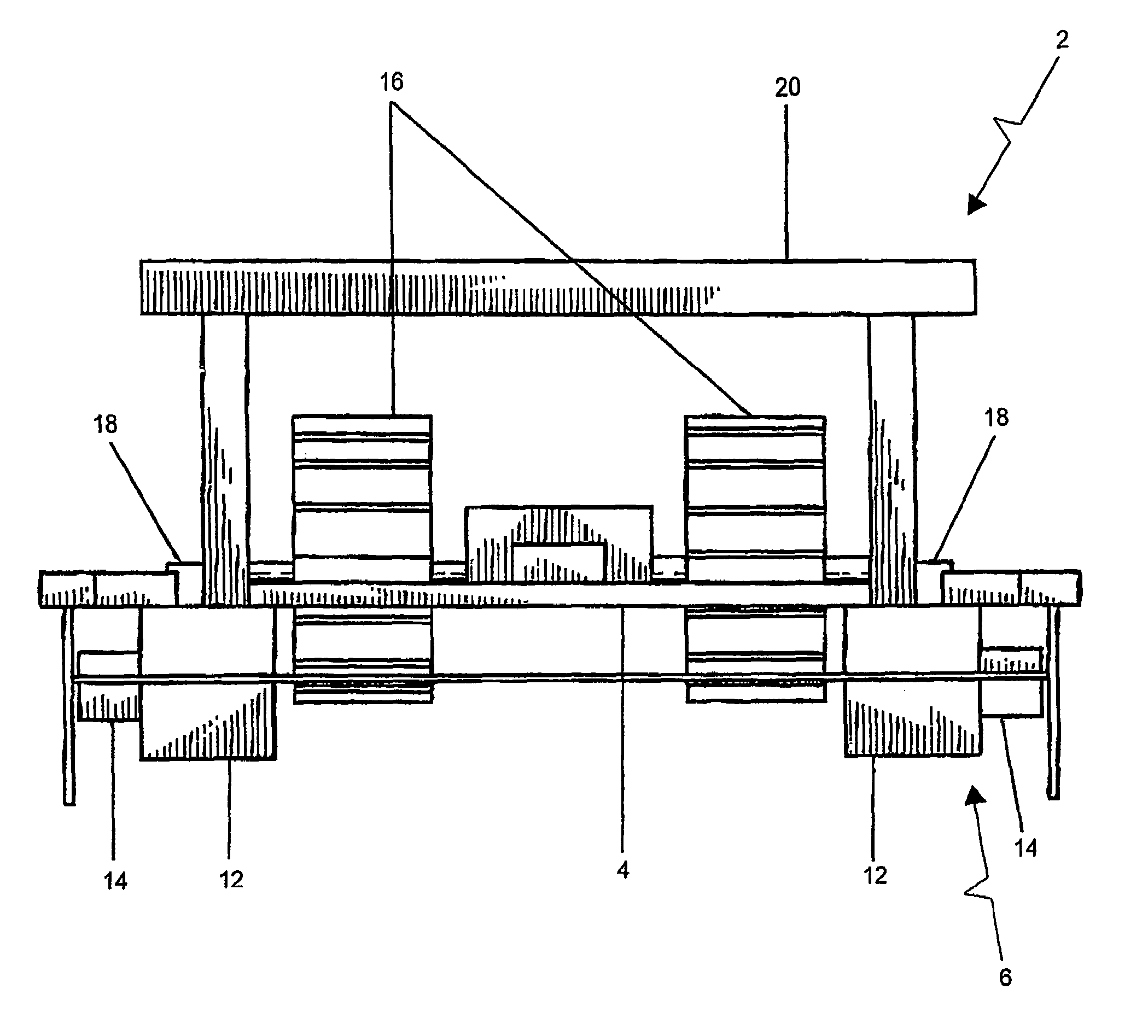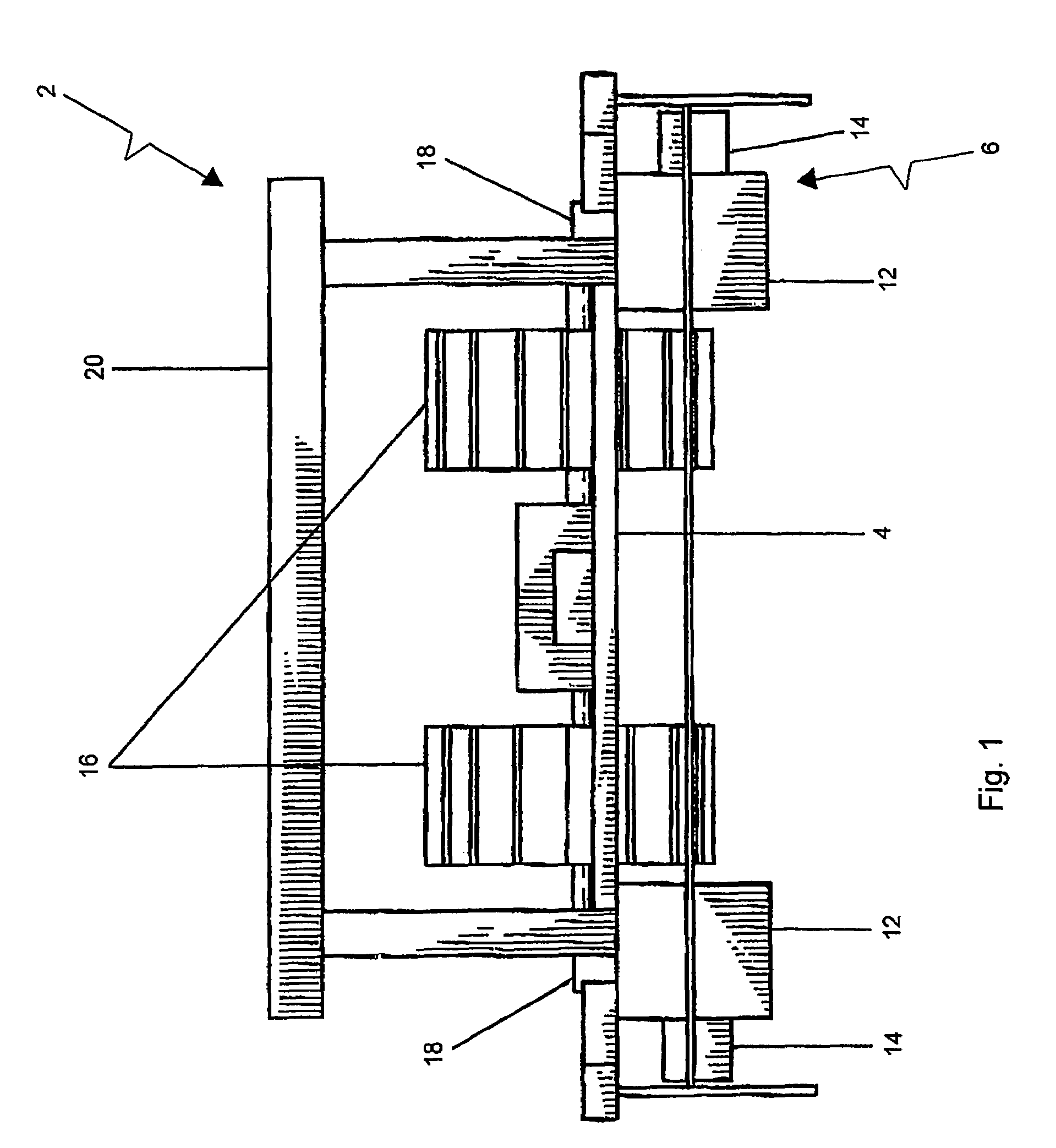Autonomous bird predation reduction device
a technology of automatic bird predation and reducing device, which is applied in the direction of marine propulsion, special-purpose vessels, vessel construction, etc., can solve the problems of aquaculture pond damage, fish depredation of birds, crawfish and shrimp, and poses major problems, so as to reduce predation, reduce predation, and reduce the effect of bird predation
- Summary
- Abstract
- Description
- Claims
- Application Information
AI Technical Summary
Benefits of technology
Problems solved by technology
Method used
Image
Examples
example 1
Construction of the Prototype
[0026]The chassis 4 was made from aluminum sheet metal and bar stock. The fixed and moveable floats, 12 and 14, respectively, were fabricated from Styrofoam®, and protected from mechanical damage by 16-gauge aluminum. The chassis 4 contained two fixed floats 12 (volume=660 in3 (˜10.8 L)) and two moveable floats 14 (volume=315 in3 (˜5.2 L)) attached to the side of each fixed float 12 to provide additional buoyancy and balance. The chassis 4 provided approximately 50 lb (˜16 kg) total buoyancy. The total weight of the predation reduction device 2 was between 30–40 lb (˜13–18 kg), depending upon the embodiment being operated.
[0027]Paddle wheels 16 were constructed from riveted sheet aluminum. Paddle wheels 16 were mounted on each side of the predation reduction device 2 and attached to two 12V Pittman®, Model GM712–31, electric motors 18. Electric motors 18 were connected to paddle wheels 16 by a gear drive with a 1:16 gear ratio, which allowed electric mot...
example 2
Predation Reduction Tests
[0031]To confirm that the prototype predation reduction device 2 was effective in repelling predatory birds, tests were conducted using various navigation methods. In one embodiment, a navigation method used proximity feelers 28 to detect the shoreline and then turn the predation reduction device 2. Using this method, the device 2 performed a “random walk” type movement around the pond as the shoreline was encountered. The predation reduction device 2 backed up for 6 seconds to move away from the shoreline, and then turned for 6 seconds to perform a 0° to 360° turn. (Micro-controllers, software and either relays or transistor drivers were adapted and employed to accomplish this “random walk-type” movement.) These functions (i.e., traversing the pond, backing up, and turning) also scared the birds away from the pond and the shoreline. Initial testing was conducted at the Louisiana State University Ben Hur Aquaculture Center in Baton Rouge, La.
[0032]Another na...
example 3
Alternative Embodiment
[0036]In an alternative embodiment, a docking station (not shown) can be employed to automatically recharge the batteries on the predation reduction device 2. Optionally, batteries with a low charge may be replaced with fully charged batteries. In this embodiment, the docking station comprises a hub platform and output terminal posts. The hub platform has V-shaped guides which extend outwardly to engage the predation reduction device 2. (The docking station can be positioned on the water or moored to the shore-line.)
[0037]Once a low battery level is detected, the navigation system processes guidance information received from either the collision prevention system (e.g., mechanical proximity feelers, sensory bumper guards, etc.) or the navigation system (machine vision system, differential global positioning system, etc.) to locate and engage the docking station. The machine vision system may be programmed to detect a homing signal (e.g., blinking light) mounted...
PUM
 Login to View More
Login to View More Abstract
Description
Claims
Application Information
 Login to View More
Login to View More - R&D
- Intellectual Property
- Life Sciences
- Materials
- Tech Scout
- Unparalleled Data Quality
- Higher Quality Content
- 60% Fewer Hallucinations
Browse by: Latest US Patents, China's latest patents, Technical Efficacy Thesaurus, Application Domain, Technology Topic, Popular Technical Reports.
© 2025 PatSnap. All rights reserved.Legal|Privacy policy|Modern Slavery Act Transparency Statement|Sitemap|About US| Contact US: help@patsnap.com



